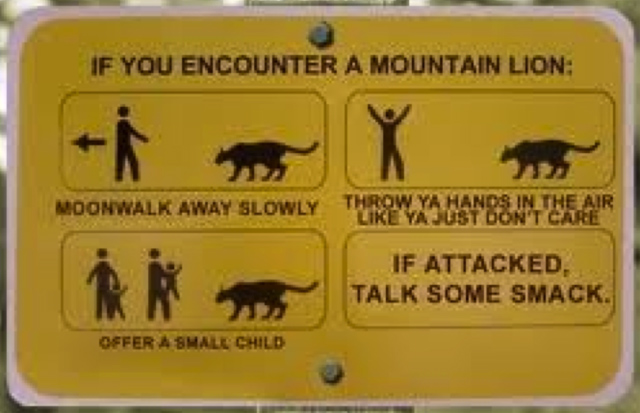Pumas are highly elusive animals and the chance of running into one is VERY slim. But, with the recent Cruz Alerts—text/call alerts sent out to students and faculty of UCSC about potentially dangerous activity—regarding Mountain Lion sightings near the UCSC campus, I think we should ease our minds a bit. Let’s consider the odds:
Upon doing a quick web search, I found some interesting numbers regarding the probability of everyday and not so everyday events:
You are more likely to…
– Die in a car accident (1 in 84)
– Go to prison this year (1 in 139)
– Be injured by a toilet this year (1 in 10,000)
– Be struck by lightning (1 in 10,456)
– Be attacked by a domestic dog (1 in 131,890)
– Be elected a president (1 in 10million)
– Be stuck and killed by a falling aircraft (1 in 25 million)
…then get attacked by a mountain lion (1 in 300 million)
* World statistics provided by Askville on Amazon.com
Puts things into perspective, right? While I understand that puma sightings can be alarming, according to the CA Department of Fish and Game, about 85%-90% of sighting are NOT actually pumas. In California, the statistics are very clear:
There have been:
o 16 verified attacks since 1890
o 6 deaths since 1890 (2 from rabies transmitted by an infected lion)
o 0 verified attacks in the Bay Area since 1909
See what I mean? Mountain lions are not a significant source of danger in the outdoors. However, this doesn’t mean we shouldn’t be smart and take precautions when hiking in mountain lion country. Most importantly:
o Avoid hiking camping or backpacking alone if you can.
o Do NOT approach a Puma, especially one with cubs. They like to avoid humans so leave space for them to do so.
o Do NOT run past or away from a puma, they might chase you!
o Do NOT bend or crouch near a Puma, they might confuse you for prey; instead try to appear BIGGER by waving your arms
You are more like to die from a misstep off a trail than from a mountain lion attack, so always hike safely!
Daniela Rosas

